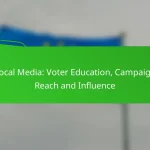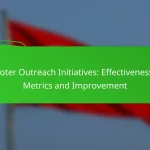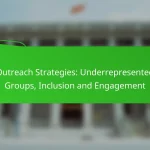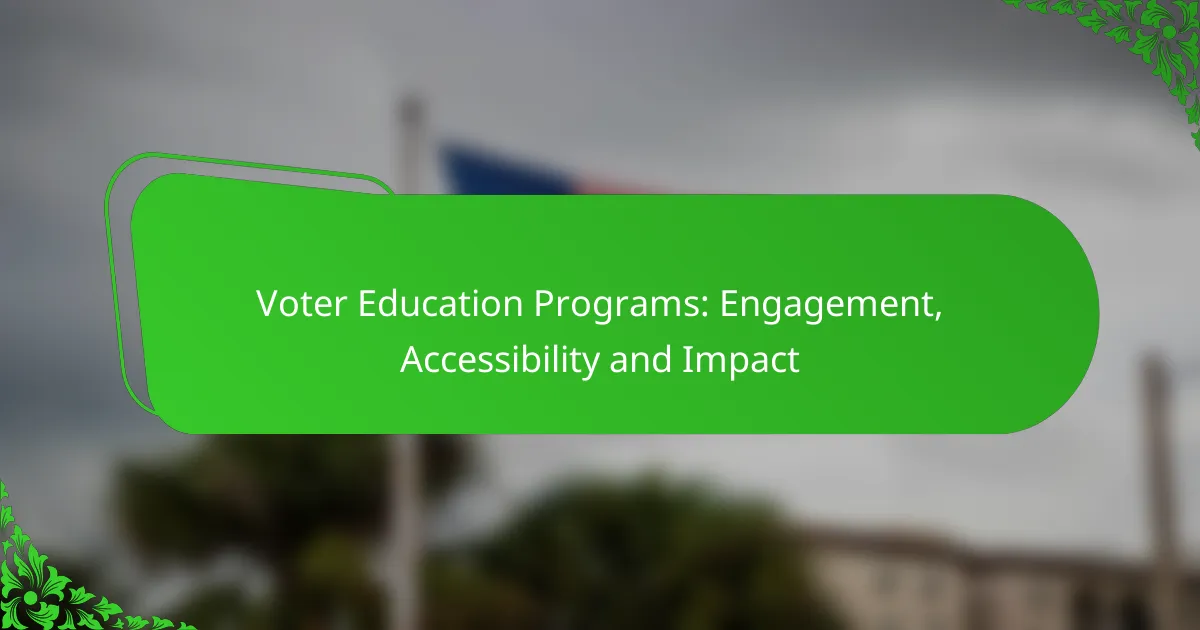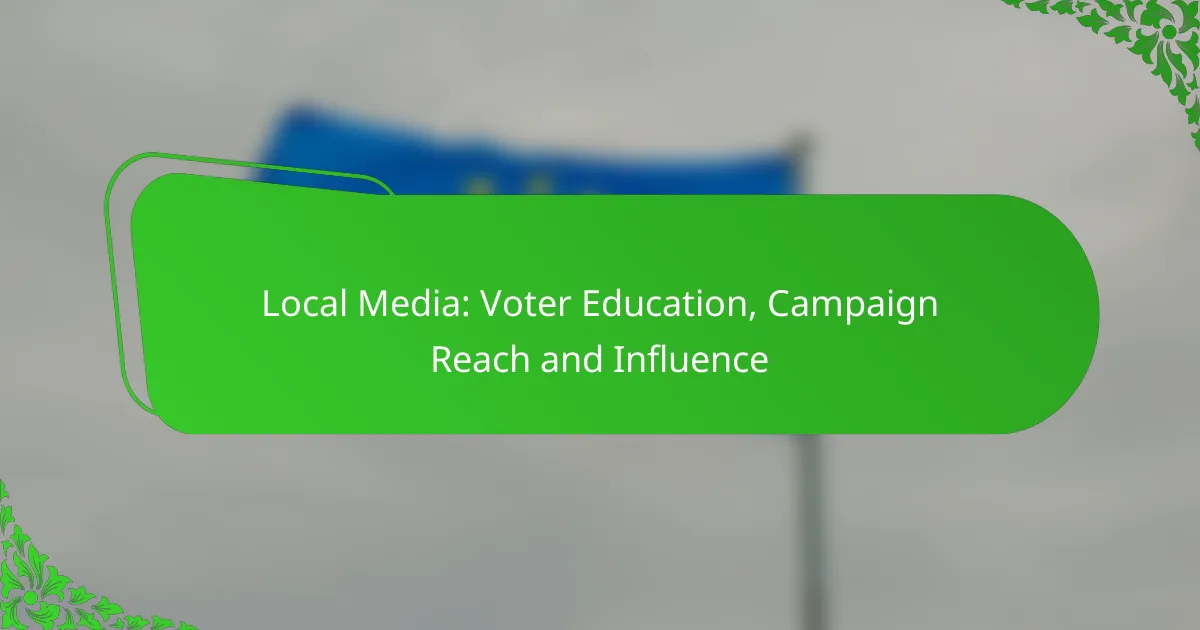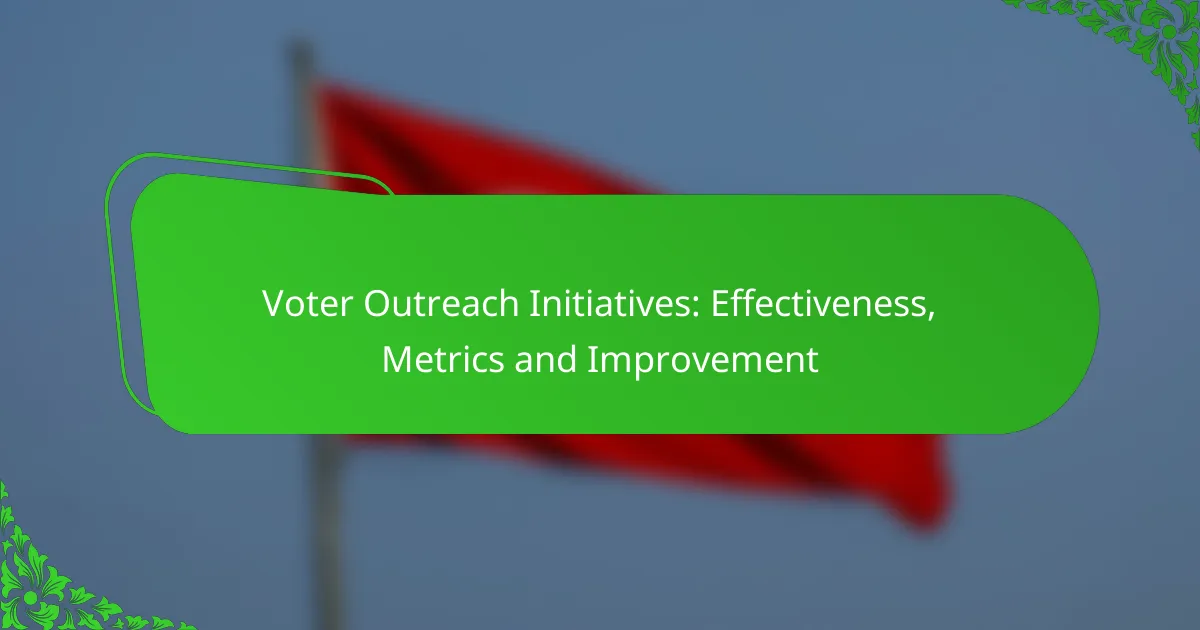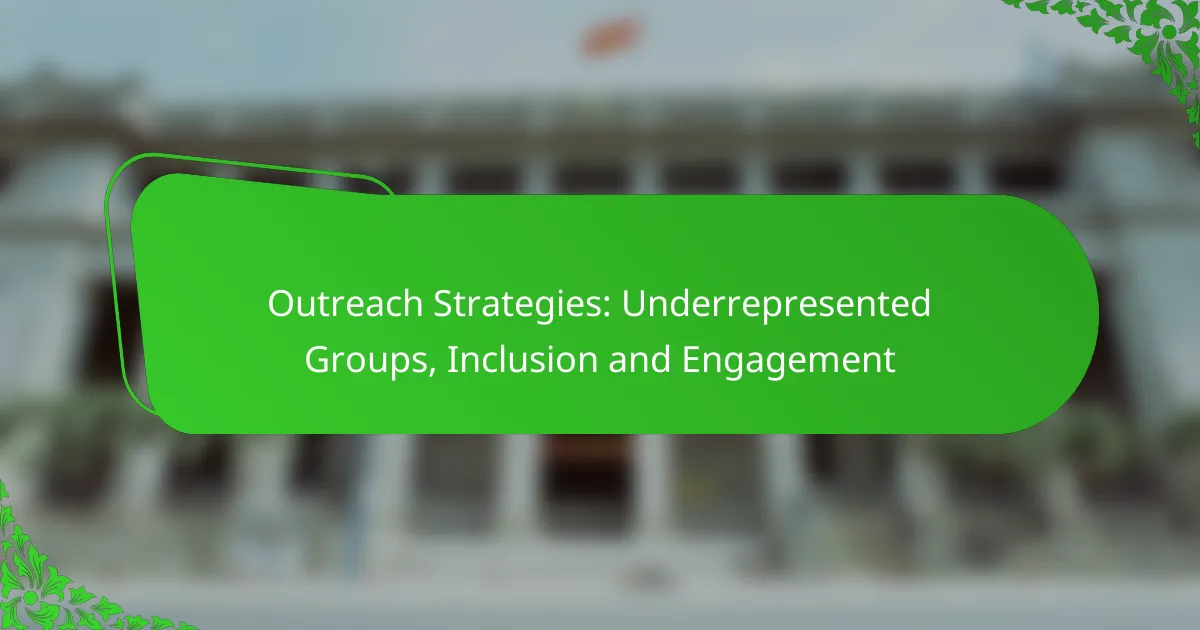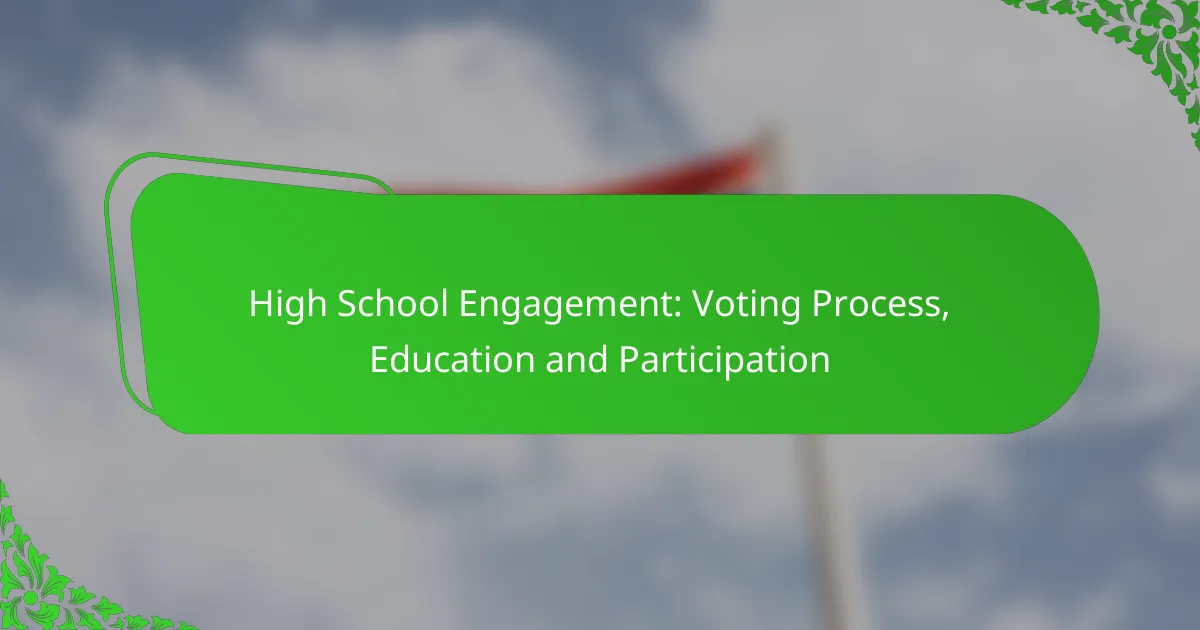Voter education programs play a crucial role in enhancing civic engagement by informing citizens about their voting rights and the electoral process. By providing accessible resources and support, these initiatives empower individuals to participate effectively in democracy, ultimately influencing election outcomes through increased voter participation and informed decision-making.
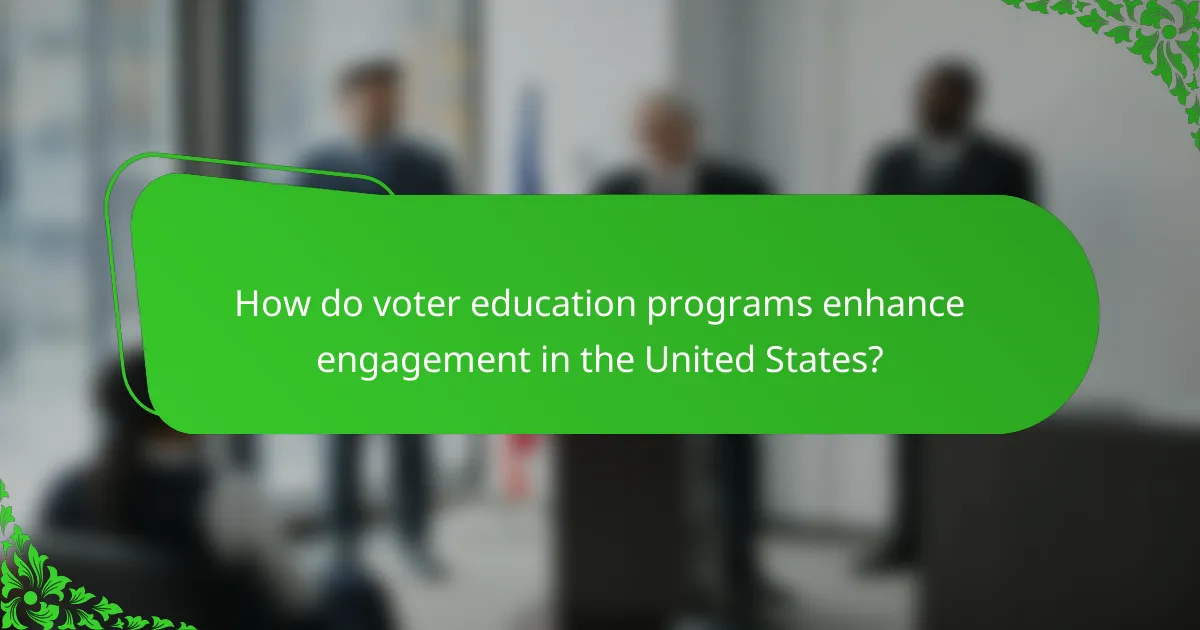
How do voter education programs enhance engagement in the United States?
Voter education programs significantly enhance engagement by informing citizens about their voting rights and the electoral process. These initiatives aim to empower individuals, ensuring they understand how to participate effectively in democracy.
Increased awareness of voting rights
Voter education programs raise awareness about the rights individuals have when it comes to voting, including the right to register, vote without intimidation, and access assistance. By providing clear information on these rights, programs help to demystify the voting process and encourage more people to exercise their civic duties.
Understanding voting rights can lead to higher participation rates, especially among marginalized communities who may feel disenfranchised. Programs often distribute materials that outline these rights in accessible language, making it easier for everyone to comprehend.
Community outreach initiatives
Community outreach initiatives play a crucial role in connecting with potential voters, particularly in underrepresented areas. These programs often involve door-to-door canvassing, informational booths at local events, and partnerships with schools and community centers.
By engaging directly with communities, these initiatives can tailor their messages to address specific local concerns, thereby increasing the likelihood of voter participation. Outreach efforts can also include multilingual resources to accommodate diverse populations.
Partnerships with local organizations
Forming partnerships with local organizations enhances the effectiveness of voter education programs. Collaborating with nonprofits, civic groups, and faith-based organizations allows programs to leverage existing networks and resources.
These partnerships can facilitate workshops, distribute educational materials, and host events that draw in community members. By working together, organizations can amplify their reach and impact, ensuring that more individuals receive vital information about voting.
Use of social media campaigns
Social media campaigns are an effective tool for voter education, allowing programs to reach a broad audience quickly. Platforms like Facebook, Twitter, and Instagram can be used to share important deadlines, voting procedures, and information about candidates and issues.
Engaging content, such as infographics and videos, can capture attention and encourage shares, further spreading awareness. Programs should consider targeted ads to reach specific demographics, ensuring that their messages resonate with diverse groups.
Interactive workshops and events
Interactive workshops and events provide hands-on opportunities for individuals to learn about the voting process. These sessions often include discussions on how to register, what to expect on election day, and how to research candidates and issues.
By creating a welcoming environment for questions and discussions, these events can demystify the voting process and build confidence among participants. Providing incentives, such as refreshments or small giveaways, can also increase attendance and engagement.
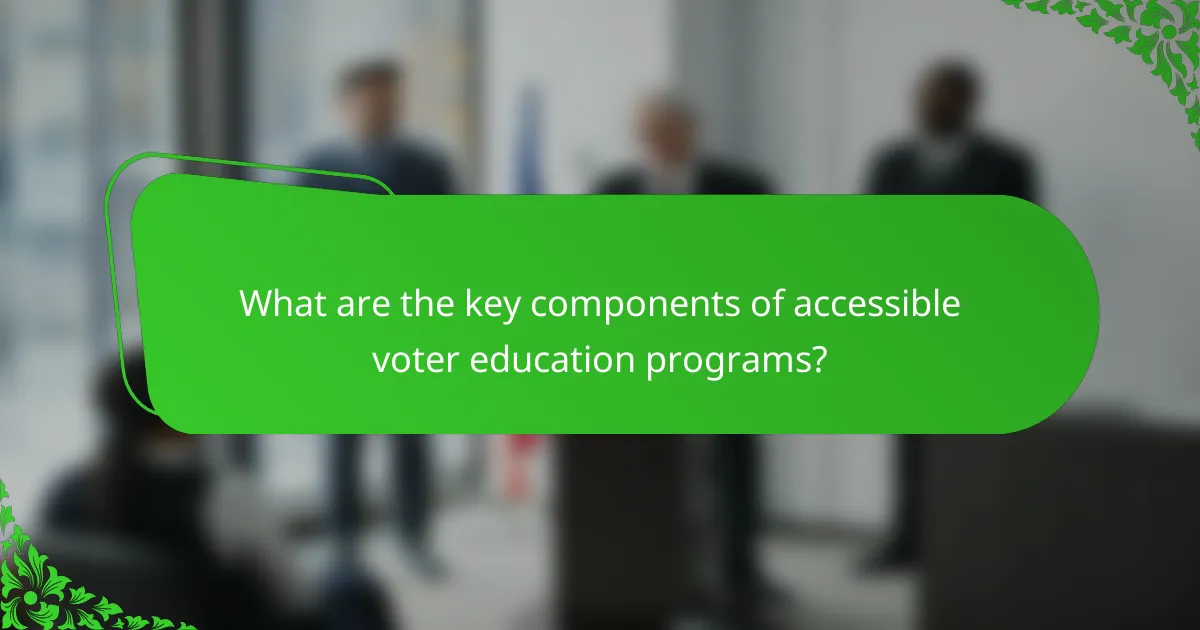
What are the key components of accessible voter education programs?
Accessible voter education programs are designed to ensure that all individuals, regardless of language, ability, or location, can effectively engage in the voting process. Key components include multilingual resources, accessible materials for those with disabilities, online learning platforms, and in-person assistance at polling places.
Multilingual resources for diverse populations
Multilingual resources are essential for engaging voters from various linguistic backgrounds. Providing materials in multiple languages helps ensure that non-native speakers understand their voting rights and the voting process.
Programs should consider the predominant languages spoken in their communities and offer resources such as brochures, websites, and instructional videos in those languages. This approach not only increases accessibility but also fosters inclusivity in the electoral process.
Accessible materials for individuals with disabilities
Accessible materials for individuals with disabilities include formats such as large print, braille, and audio recordings. These adaptations ensure that everyone, regardless of their physical abilities, can access vital information about voting.
It is important to follow established accessibility standards, such as the Web Content Accessibility Guidelines (WCAG), when creating digital resources. Additionally, providing clear instructions on how to request accommodations can further enhance accessibility for voters with disabilities.
Online platforms for remote learning
Online platforms for remote learning offer flexible options for voters to educate themselves about the electoral process. These platforms can host webinars, interactive tutorials, and informational videos that are accessible from home.
To maximize engagement, programs should ensure that online content is user-friendly and compatible with assistive technologies. Offering recorded sessions allows voters to revisit information at their convenience, reinforcing their understanding of the voting process.
In-person assistance at polling places
In-person assistance at polling places is crucial for helping voters navigate the voting process on Election Day. Trained volunteers or election officials can provide guidance on how to cast a ballot and address any questions or concerns that arise.
Polling places should be equipped with clear signage and staff who are knowledgeable about accessibility options. This support can significantly reduce barriers for individuals who may feel overwhelmed or confused during the voting process.

What impact do voter education programs have on election outcomes?
Voter education programs significantly influence election outcomes by enhancing voter participation and informed decision-making. These initiatives aim to equip citizens with the knowledge necessary to engage in the electoral process effectively.
Higher voter turnout rates
Voter education programs are linked to higher turnout rates during elections. By providing information on registration processes, polling locations, and voting methods, these programs empower citizens to participate actively. For instance, communities that implement targeted outreach often see turnout increases of several percentage points compared to those without such initiatives.
Informed decision-making among voters
These programs promote informed decision-making by educating voters about candidates, policies, and the implications of their choices. When voters understand the issues at stake, they are more likely to make decisions that reflect their values and interests. Workshops, informational websites, and community forums are effective tools for disseminating this information.
Reduction in misinformation
Voter education initiatives play a crucial role in reducing misinformation surrounding elections. By providing accurate information and debunking myths, these programs help voters navigate the complexities of the electoral process. For example, campaigns that clarify voting procedures and deadlines can significantly diminish confusion and false narratives that often circulate during election seasons.
Increased participation from underrepresented groups
Voter education programs are essential for increasing participation among underrepresented groups, including minorities and low-income individuals. Tailored outreach efforts, such as multilingual materials and community partnerships, can address specific barriers these groups face. By fostering an inclusive environment, these initiatives ensure that all voices are heard in the democratic process.
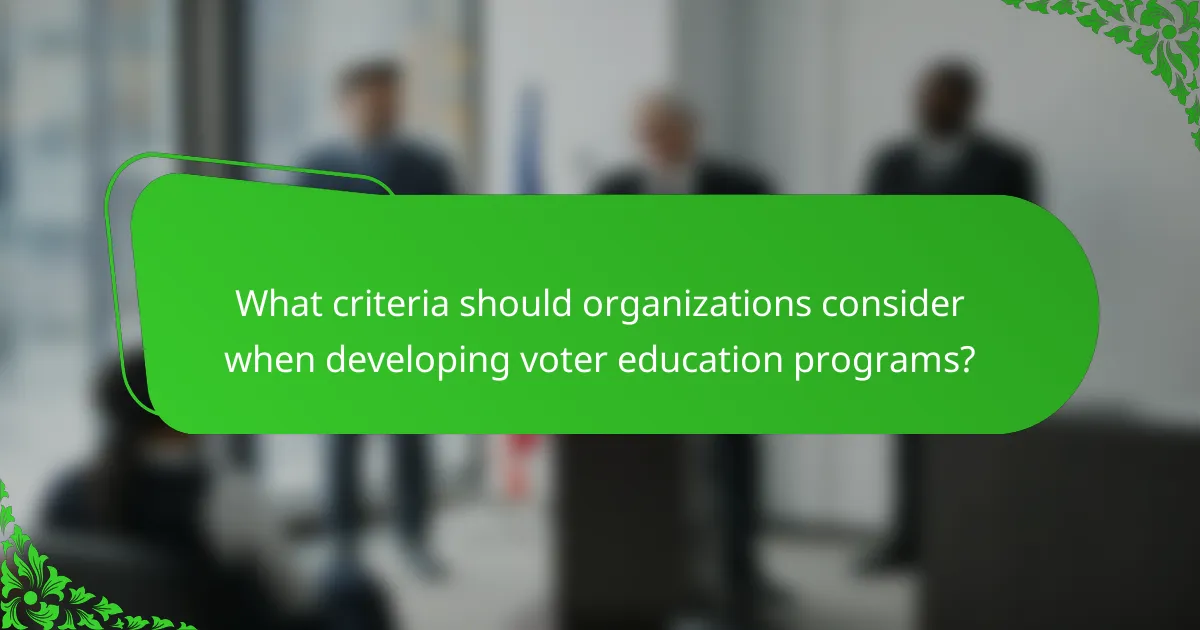
What criteria should organizations consider when developing voter education programs?
Organizations should focus on understanding their target audience, securing adequate funding, and ensuring accessibility when developing voter education programs. These criteria help create effective initiatives that engage voters and promote informed participation in elections.
Target audience demographics
Identifying the target audience demographics is crucial for tailoring voter education programs. Consider factors such as age, education level, language proficiency, and community needs to ensure the content resonates with the intended participants.
For example, programs aimed at young voters may utilize social media platforms and interactive content, while materials for older adults might be more effective in print or through community workshops. Understanding these demographics allows organizations to craft messages that are relevant and engaging.
Budget and funding sources
Establishing a clear budget and identifying potential funding sources are essential steps in developing voter education programs. Organizations should assess their financial capabilities and explore grants, partnerships, and donations to support their initiatives.
Common funding sources include government grants, nonprofit organizations, and private donations. It is advisable to create a detailed budget that outlines expected expenses, such as materials, outreach efforts, and event costs, to ensure that resources are allocated effectively.
